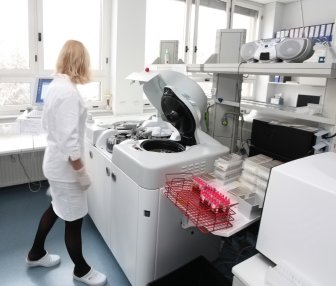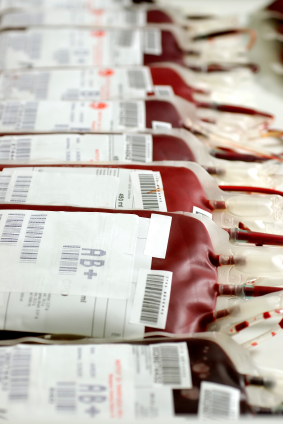Reducing Cycle Times: Evaluating the American Red Cross' Blood Donor Testing Process
 American Red Cross
American Red Cross
In the United States, someone needs blood approximately every two seconds. With the American Red Cross providing 50% of this supply, this translates to 6.9 million samples being tested each year. In 1991, the American Red Cross consolidated its network of 53 original Red Cross testing laboratories into nine state-of-the-art facilities. Implementation of standardized operating procedures, training and equipment at the nine National Testing Laboratories (NTLs) improved quality control, facilitated the adoption of new technology, and maximized sample flow and flexibility. Currently, ninety-five percent of all blood is tested within 15 hours from the time the blood samples are received by the NTL; 99 percent of all blood is tested within 24-hours. In an effort to both improve on this high service standard and lower costs, the National Testing and Reference Laboratory Headquarters looked to simulation as a potential tool.
 The simulation project’s objective was to create a user-friendly simulation application that could be implemented across the network of NTLs at the management level. The resulting application was to take into account varying sample arrival times and volumes, staffing levels, batch sizes, process times, equipment availability, retesting, and quality control procedures. Key results were to include: quantities completed, graphical and tabular representation of turn around time for each run, equipment and staff utilization, and a graphical analysis of the progression of each production run.
The simulation project’s objective was to create a user-friendly simulation application that could be implemented across the network of NTLs at the management level. The resulting application was to take into account varying sample arrival times and volumes, staffing levels, batch sizes, process times, equipment availability, retesting, and quality control procedures. Key results were to include: quantities completed, graphical and tabular representation of turn around time for each run, equipment and staff utilization, and a graphical analysis of the progression of each production run.
 A number of valuable insights were gained through the use of this simulation. Specifically, the model provided an increased understanding of the progression of test runs through the facility and highlighted how critical correct staffing levels and shift patterns are to the performance of the system. Secondly, the model proved that much of the process turnaround time is dictated by the arrival pattern of donor samples. Because the influx of samples can be potentially controlled, this realization led to a follow-up simulation project to analyze the larger supply chain for blood. The project also highlighted the numerous operations for which samples need to be manually re-racked into different sized batches due to batch sizes drastically changing from one operation to the next. Currently the model is undergoing its third revision so as to accommodate significant process changes necessitated by the implementation of a new Laboratory Information System (LIS) at the NTLs.
A number of valuable insights were gained through the use of this simulation. Specifically, the model provided an increased understanding of the progression of test runs through the facility and highlighted how critical correct staffing levels and shift patterns are to the performance of the system. Secondly, the model proved that much of the process turnaround time is dictated by the arrival pattern of donor samples. Because the influx of samples can be potentially controlled, this realization led to a follow-up simulation project to analyze the larger supply chain for blood. The project also highlighted the numerous operations for which samples need to be manually re-racked into different sized batches due to batch sizes drastically changing from one operation to the next. Currently the model is undergoing its third revision so as to accommodate significant process changes necessitated by the implementation of a new Laboratory Information System (LIS) at the NTLs.


 Capacity Planning
Capacity Planning